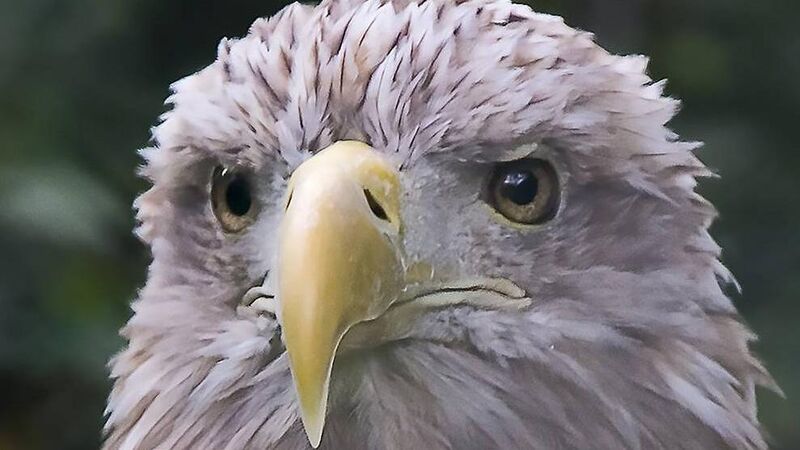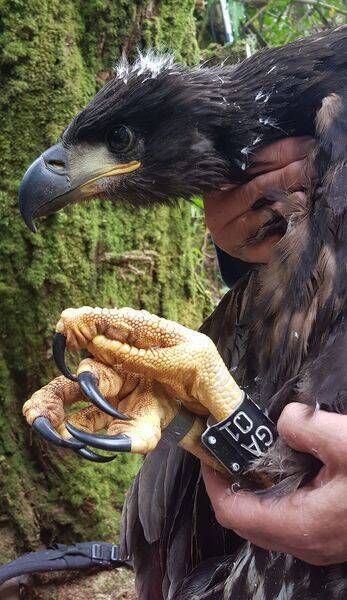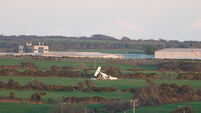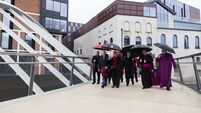White-tailed sea eagle chicks released in Killarney National Park

NPWS director general Niall Ó Donnchú said the eagle reintroduction programme 'really is a flagship initiative for NPWS, as it reflects so many elements of our conservation work'.
Four white-tailed sea eagles, the first of this year’s batch of 27 brought from Norway, have been released in Killarney National Park.
Flown into Farranfore at the end of June, the chicks from Trondheim in Norway are aged between eight and 11 weeks and have been acclimatising and growing their flight feathers in their pen in the national park.
Another batch of the eagles are being held in Lough Corrib, and nine eagles are being held and fed on the Shannon estuary, to be released in the coming weeks.
The re-introduction of the white-tailed sea eagle, the largest of the Irish birds of prey, began in 2007 when 10 eagle chicks were brought in as part of a five-year programme in Killarney. In all, 100 of the eagles were released in the first phase of the scheme.
The current phase of the programme began in 2020 and involves a number of sites across the south and west of Ireland.
The chicks are fitted with satellite tags so their movements can be tracked as they disperse and establish in new areas.
Ongoing monitoring of the birds indicates they are nesting and breeding in various new locations, Dr Philip Buckley of the National Parks and Wildlife Service (NPWS) said.
The chicks are vulnerable to external factors such as adverse weather conditions, avian influenza and disease, as well as illegal poisonings and shootings.

Initial antipathy by the farming community towards the large birds of prey, with wing spans of 8ft, has eased and the eagles are now largely welcomed.
They have been feeding on dead animal flesh and fish and there have been no reports of live lambs being attacked by the birds.
NPWS director general Niall Ó Donnchú said the eagle reintroduction programme “really is a flagship initiative for NPWS, as it reflects so many elements of our conservation work — time and care, using science and best practice, combined with strong community engagement and partnership.”
Killarney National Park provides the perfect nesting habitat, with old, tall oak and pine trees, quiet surroundings, and an ample supply of fish available in the lakes for their survival.
It has been a good year so far for the eagle population, with 15 breeding pairs — the largest ever — and a dozen have produced young.
The white-tailed sea eagle reintroduction project is a joint initiative between the National Parks and Wildlife Service of the Department of Culture and Heritage and the Golden Eagle Trust in collaboration with the NorskInstitutt for Naturforskning and the Norwegian Ornithological Society.













